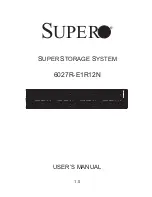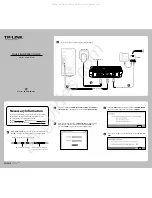
Advanced Configuration
325
command. The computer then processes the command, displays
whatever output is appropriate, and presents another prompt for the
next command. Typical commands are to run a program, enter a text
editor, list files, and change directories. This mode of interaction is
common, for instance, in the traditional DOS and UNIX operating
systems.
Command line interface. An interface that allows users to use text commands
that tell computers to perform actions (compared to using a GUI). Through a
CLI, individual commands can be given to the computer one at a time using a
keyboard. Alternately, users can save a series of frequently-used commands
in a file called a script. Being able to create and run scripts to automate
repetitive tasks is one of the reasons many administrators prefer using a CLI.
Most computer operating systems have both GUI and CLI modes. Cyclades
products run the Linux operating system, and most Cyclades products provide
CLI access. CLI access is achieved through several different means. For one
example, if a remote administrator uses Telnet to access an AlterPath OnSite,
the administrator can then tell the OnSite to perform actions using the CLI by
typing commands on the Linux shell's command line.
Do not be confused by the fact that some Cyclades products offer a
management tool called the CLI, which has the same name as the term used in
general for any command line interface. The Admin user can select “CLI” at a
prompt after logging into the APM console (a regular user logging into the
APM console gets the “CLI” prompt by default). The Cyclades CLI tool
provides many commands and nested parameters in a format called the CLI
parameter tree.
Client-side management software—See Management software
Console
This term is used to mean the serial console interface that is present on most
Cyclades devices. It is a physical serial port that interfaces with a serial
terminal that can be used to interface with the device. The serial console
interface allows an administrator to have shell access to the device. The
administrator can use this interface for advanced configurations.
On the AlterPath Manager, “Console” also is used to describe any of the ports
on a device, such as KVM ports on a KVM/net device or an OnSite device; or
any of the serial ports on an ACS device, a TS device, or an OnSite device.
Содержание AlterPath Manager 2500
Страница 16: ...xiv AlterPath Manager Installation Configuration and User s Guide ...
Страница 20: ...xviii AlterPath Manager Installation Configuration and User s Guide ...
Страница 32: ...AdditionalResources xxx APM Installation Configuration and User s Guide ...
Страница 52: ...OnSite Support 20 APM Installation Configuration and User s Guide ...
Страница 74: ...Pre Configuration Requirements 42 APM Installation Configuration and User s Guide ...
Страница 116: ...User s Profile 84 APM Installation Configuration and User s Guide ...
Страница 228: ...Groups 196 APM Installation Configuration and User s Guide Figure 4 57 New User Group Security Form ...
Страница 286: ...Redundant Fault Tolerant Configuration 254 APM Installation Configuration and User s Guide ...
Страница 354: ...Data Logging Session Activation 322 AlterPath Manager Installation Configuration and User s Guide ...
Страница 364: ...332 APM Installation Configuration and User s Guide ...












































